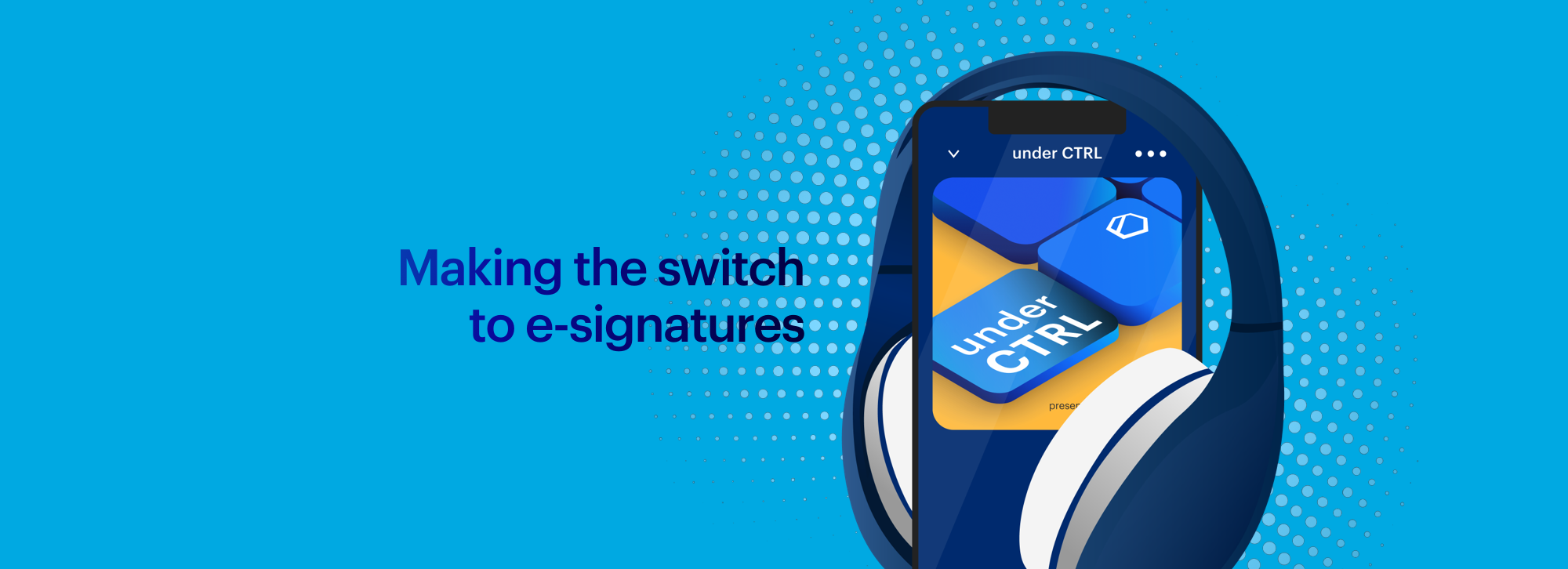Making the switch to e-signatures

Digitizing your business can seem like a daunting task, especially when it comes to sensitive or confidential files.
Tresorit eSign is designed to bring one of our customers’ most common office tasks — signing documents and contracts — into Tresorit’s secure digital ecosystem.
It’s the latest key step in our bid to create a comprehensive, protected, and legally secure document management system, catering to the entire lifecycle of sensitive files in one integrated platform.
In our latest under CTRL episode, we're introducing our newest product, Tresorit eSign, as well as a sneak peek at how we’ll be expanding and improving the platform even further in the future. Read on for a round-up of the major talking points.
1. Confidentiality is everyone’s business
Confidential documents are an integral part of modern businesses: whether you’re signing a contract with a new customer, onboarding a new vendor, or distributing contracts in HR. But because these documents are so ubiquitous, they can often be overlooked, especially by employees working in departments that aren’t seen as a high risk for cybersecurity.
Using a digital platform such as Tresorit eSign standardizes procedures across departments so that all contracts are held to the same high security standards. It also streamlines the signing process, ensuring this everyday task is as efficient and pain-free as possible for your team.
2. United workflows reduce risk
Modern offices often use different platforms or software for similar tasks. These fragmented workflows don’t only hinder efficiency by adding extra steps to daily tasks, they also create cybersecurity weak points.
Employees forced to use multiple tools at once are more likely to make mistakes: whether than is misplacing or confusing login details, inadvertently leaking data when importing documents, or forgetting vital security steps.
Uniting workflows, so that a single task such as storing and signing a document can take place on a single platform, mitigates those risks.
3. Keep third parties a priority
A smooth signing experience is key to providing top-level customer service.
Global-facing businesses need to be able to reach their clients wherever they are in the world. But while digital business tools have proliferated post-pandemic, customers are often reluctant to install or struggle with new software.
Using a unified document platform to collect and store signatures in a single place removes the need for clients to juggle multiple systems. Most importantly, tools such as Tresorit eSign are designed to be accessible even without an account — allowing outside parties to simply sign documents with a single click.
Tresorit also provides extra peace of mind when your documents are sent to outside parties. As all of your files are stored in Tresorit’s end-to-end encrypted environment, you’ll retain complete control over your contracts, with tools on hand to restrict who can view and edit each document, or how long they can be accessed.
4. Simple signatures are just the first step
With Tresorit eSign, documents are digitally signed with an electronic signature. The signature of each contracting party is linked to the document in question to prove their agreement with its content. In most cases in regions such as the UK and the European Union, such signatures are fully recognized by law and require no further proof of legitimacy.
However, Tresorit knows that sometimes only the highest level of security is enough. That’s why we’re also laying the groundwork to later offer customers more stringent, legally compliant qualified electronic signatures (QES) from the same user-friendly platform.
Subscribing to our social media channels is the quickest way to find out when QES will be available in your region. But in the meantime, we’re keen to hear your thoughts and feedback while we continue to improve Tresorit eSign. Drop us a line with any comments or questions at research@tresorit.com — we can’t wait to hear from you.
If you’d like to access the webinar in full you can check out the full episode here:






